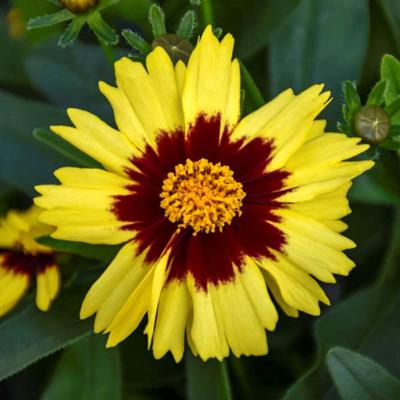This week’s Coastal Point newspaper feature is “Coreopsis — called tickseed, but not for ticks” by Liz Nalle. Thank you Coastal Point newspaper!

COASTAL POINT:
The coreopsis family, also known as tickseeds, are just about the ideal garden plant — long bloom time, low maintenance, gorgeous flowers and good foliage. What more could you ask for?
The genus (a genus is a group of animals or plants, more closely related than a family, but less similar than a species, according to the dictionary) coreopsis is made up of more than 80 species, some of which are native to the Mid-Atlantic states.
They mostly grow in upright clumps, with a moderate growth rate. They have bright, daisy-like flowers in shades of yellow to pink to red. Their foliage can be different — remember, it’s the flowers that determine how plants are related, not the leaves.
Some are annuals, most are perennial. They all like sun and aren’t fussy about soil — average to sandy garden soil is fine, without fertilizer. They don’t need it, and too much will make them weak and floppy. They are all drought-tolerant once established. They will get to anywhere from 1 to 3 feet tall — perfect garden sizes. As members of the aster family, they are attractive to pollinators, and birds like the little seeds, so you shouldn’t be too diligent about cutting them back in fall.
There are a number of great garden varieties. Here are a few:
- Zagreb — a cultivar (cultivated variety) developed from coreopsis verticillata, which has very fine, delicate linear foliage, with a pretty, airy texture. It gets to about 1 foot tall, maybe a little more, and spreads by rhizomes into a nice clump. It won’t take over, though! It appreciates a little more moisture than most coreopsis. It blooms from early summer into early fall. Its cousin Monbeam has butter-yellow flowers but is otherwise very similar.
- Early Sunrise — developed from coreopsis grandiflora, meaning large flowers, this one gets to about 18 inches, with big, golden-yellow, ruffled flowers. The leaves are different, not as finely textured, but still nice. It blooms earlier, from late spring to late summer.
- The Uptick series — several different varieties, all getting to about 18 inches, with beautiful, large multicolored flowers. With their tidy habit, easy care and gorgeous flowers, these are great plants.
All of these would look nice in your garden. Pair them with butterfly milkweed, gayfeather or coneflowers for bright, cheerful color, and the pollinators will thank you.

By Liz Nalle, Inland Bays Garden Center
